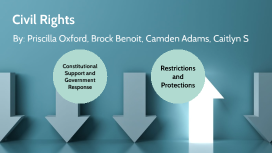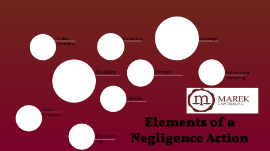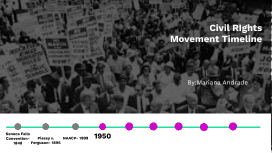Civil Rights Powerpoint
Transcript: Does the reading of a nondenominational prayer violate the "establishment of religion" clause of the 1st Amendment? It is unconstitutional for state officials to compose an official school prayer and encourage its recitation in public schools. Issue Addressed: School Prayer Throughout American history, women had been inferior on every aspect in the society. 1960s was a period that women spoke for themselves, gaining social rights that they were banned from. This case is important because it gave women control so that they could decided for themselves instead of following instructions that men and the society had given them in the past. It was women's time to shine! - Gave a woman total autonomy over the pregnancy during the first trimester. Separate but equal had always been a situation that was difficult to describe, so the society allowed it to happen. This case is important because the Federal Court decided it was unequal; it was a huge step for African Americans to be protected by the gov. and have equal access by law. - Also said that separation from the majority of law students harmed student's abilities to compete in the legal arena. Engel v. Vitale(1962) Roe v. Wade (1970) Summary of the Case: - In 1946, Heman Marion Sweatt, a black man, applied for admission t the University of Texas Law School. State law restricted access to the university to whites, and Sweatt's application was automatically rejected because of his race. - When Sweatt asked the state courts to order his admission, the university attempted to provide separate but equal facilities for black law students. Summary of the Case: - The Board of Regents of the State of New York authorized a short, voluntary prayer for recitation everyday, attempt to defuse the politically potent issue by taking it out the hands of local communities. Why Landmark Case? Issue Addressed: Women's rights Issue Addressed: racial equality Historical Context: - Separate but equal was a legal doctrine that permitted racial segregation. - Gov. was allowed to require that services facilities, public accommodations, housing, medical care, education, employment, and transportation be separated along racial lines, provided that the quality of each group's public facilities was equal. - The Court heard arguments twice. Roe's opponent posted strong arguments. Why Landmark Case? Wenxin Chen - Defined different levels of state interest for the 2nd and 3rd trimesters. 46 states were affected. A Culture of Protest The Court decided that "law school for Negroes" was unequal. Historical Context: - After WW2, the U.S. experienced another intense concern about communism abroad and at home. - Some states encouraged patriotism, moral character, and other values of good citizenship because they were afraid of McCarthy. - They also began challenging separation of church and state issues in hopes of providing students with strong moral and spiritual stamina. A violation to the Equal Protection Clause of the 14th Amendment? Does the Constitution embrace a woman's right to terminate her pregnancy by abortion? Sweatt v. Painter (1950) Summary of the Case: - Roe, a Texas resident, sought to terminate her pregnancy by abortion. - Texas law prohibited abortions except to save the pregnant woman's life. - Argued that the separate school were inferior in some situations like faculty, course variety and overall prestige. - Despite the passage of time, the decision is still unpopular with a majority of Americans. New York officially approved religion. "Almighty God, we acknowledge our dependence upon Thee, and beg Thy blessings upon us, our teachers, and our country. " Why Landmark Case? The Court held a woman's right to abortion fell within the right to privacy protected by the 14th Amendment. This case is important because it was the first in a series of cases in which the Court used the establishment clause to eliminate religious activities of all sorts, which had traditionally been a part of public ceremonies. Historical Context: - Various anti-abortion laws have been on every state statute book since at lease 1900. - Abortion was prohibited in 30 states and legal under certain circumstances (such as pregnancies resulting from rape or incest) in 20 states. Anti-abortion groups began forming in various states in 1967. - Neither the prayer's nondenominational character nor its voluntary character saves it from unconstitutionality.

















